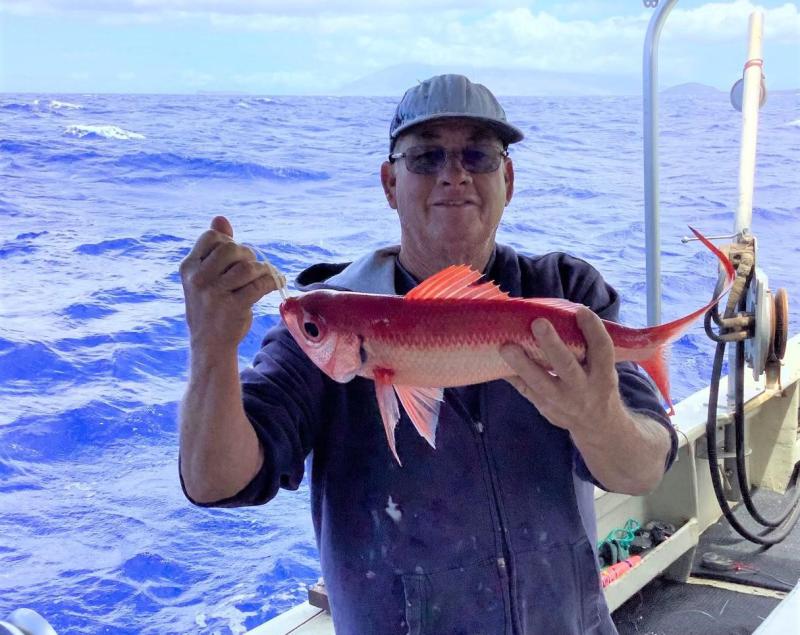Hawai‘i bottomfish are a significant cultural and commercial resource, and represent the profound connection between the local community and their surrounding waters. Ensuring their sustainability is important to continuing traditions, practices, and livelihoods. The annual Bottomfish Fishery-Independent Survey in Hawai‘i kicked off August 1 and runs through November 30, 2023. It aims to provide managers with the best available information to set commercial catch limits and help ensure a sustainable Deep 7 fishery. The success of the survey hinges on collaborative efforts between the NOAA Pacific Islands Fisheries Science Center and local fishers working together to gather this important data.
The Deep 7
The Deep 7 are the most sought-after and important group of deep-water bottomfish in Hawai‘i. The group is made up of six snappers and one grouper that typically live at depths of 75 to 400 meters. The Hawai‘i Deep 7 consists of:
- Ehu (squirrelfish snapper)
- Gindai (Brigham's snapper)
- Hapuʻupuʻu (Seale's grouper, Hawaiian grouper)
- Kalekale (Von Siebold's snapper)
- Lehi (silverjaw snapper
- Onaga (longtail snapper)
- 'Ōpakapaka (pink snapper)
These species prefer deep waters and the nooks and crannies of hard seafloor habitats. Bottomfishing is a unique tradition in Hawaiʻi that requires a tremendous amount of knowledge and skill. Fishers and chefs alike prize the 'ōpakapaka and onaga for their premium texture and mild flavor. Gindai rarely make it to market; this pink and yellow-striped snapper instead is typically found at the kitchen table being enjoyed by family and friends.
It Takes a Community
Development of the annual large-scale survey began in 2011 and the current survey method has been in use since 2016. Our recent stock assessments suggest a positive outlook: The Deep 7 are neither overfished nor experiencing overfishing. Continued survey efforts are critical to informing sustainable annual catch limits through the 2024 benchmark stock assessment and beyond.
This year’s effort is continuing to gather this important data and build upon this successful survey. It requires community and cooperation. Local cooperative research fishers are contracted through Lynker Technologies and the Pacific Islands Fisheries Group. With their help, data is collected through a combination of underwater cameras and fishing at 500 stations around the eight main Hawaiian Islands.
This year, cooperative research fishers are deploying underwater video cameras at 125 locations. The collected footage will be analyzed to identify, count, and measure bottomfish. It will also help us to better understand and manage essential fish habitat. They are also providing 375 traditional hook-and-line fish samples and report the size and species of each fish caught. We use their samples to determine growth rates, the size at which fish reach sexual maturity and become capable of spawning, and many other important characteristics. These efforts represent an ongoing commitment to enhancing our understanding of the Deep 7's habitat, behavior, and responses to environmental changes and fishing.
We are committed to marine conservation and local stewardship. To respect the fish and the local communities that have significant bonds with them, the fish that can't be used for this research will find their way back into our community. A variety of non-profit organizations will use the fish as free meals for the elderly and as hands-on learning tools for community college culinary students.
Be a Part of the Bottomfish Survey
Are you interested in joining this vital research effort? Check out OceanEYEs, the online portal where anyone can assist with the important task of analyzing camera data from the survey. Participants can identify and count Deep 7 fish, which helps to provide valuable data to the study.
Protecting our marine resources is a shared responsibility. Thanks to the collective effort of scientists, fishers, OceanEYEs volunteers, and the public, we continue to see positive outlooks for the health and sustainability of our beloved Hawai‘i Deep 7 bottomfish species.



